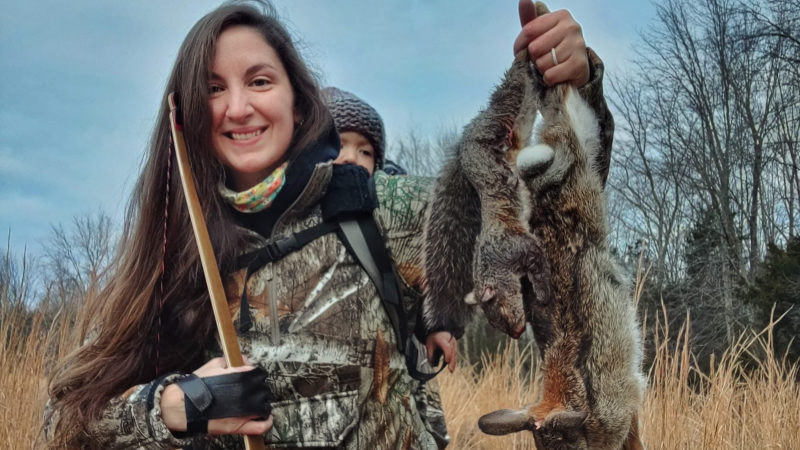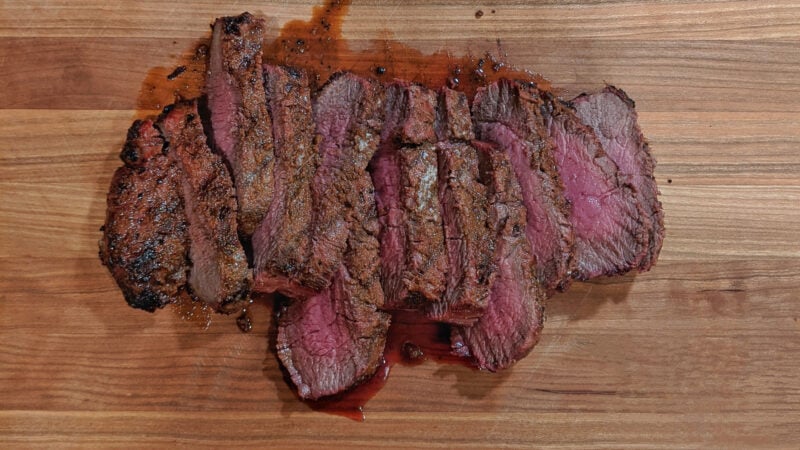I didn’t grow up in a family that knew how to cook wild game. It wasn’t my mom’s fault. She wasn’t a hunter – she just married one. My dad was an excellent hunter, yet he rarely cooked.
This resulted in having a well stocked freezer and eating wild game, mainly venison, fairly often. However, it was often utilized as ground meat, or was overcooked and tough.

When I shot my first squirrel at age 12, my squeamish mother bravely agreed to cook it if I field dressed it. The whole (cleaned) squirrel was rolled in breadcrumbs and fried in a pan, and while my siblings and I ate it, the results were extremely tough and didn’t have great flavor.
Still, we swore up and down that it was amazing. It was the story of the hunt that lent a little extra something to our taste buds that night.

Years later, as an avid hunter, I have figured out plenty of ways to cook various wild game meats, and I’ve learned how to cook them appropriately.
No more overcooked venison steaks, or tough grey squirrel hindquarters served at my table. Although, I will admit to messing up a new recipe now and then. No one is perfect!
One of the biggest fears for hunters, especially those who don’t cook often, is that they will get sick from undercooked meat. I definitely understand feeling that way. I have felt that way in the past, particularly when preparing wild hog or black bear, due to the potential for trichinosis.
However, there are many guidelines to follow that will ensure that your dishes are both properly cooked and that you aren’t getting sick after you eat it.
First, it’s good to be aware what internal temperatures each animal should be cooked.
If you aren’t familiar, it’s a great idea to keep a note on your phone for reference, or even print out a list that you can access easily whenever you’re getting ready to cook.
Generally speaking, here is a breakdown of the internal temperatures that the most common wild game should be cooked:

- Antelope and Venison (Deer, Moose, Elk) – 135°
- Bear – 165°
- Hog – 165°
- Squirrel & Rabbit – 165°
- Birds (turkey, pheasant, dove, goose, duck)should generally be cooked to 165°, although some prefer duck breast cooked to a medium rare at 135°
In many instances, it’s fairly easy to ensure that your wild game is cooked appropriately. Small game, such as rabbit and squirrel, are often best cooked with a “low and slow” method in a crockpot, or roasted in the oven at a low temperature until the meat falls off the bone.
Cooking meat with this method is usually a guarantee that it is cooked to an appropriate temperature. Similarly, a roast that is prepared with the same cooking method will seldom leave any guessing as to whether or not it is done.
Ground meat is also fairly easy to prepare, and requires little guess work.

However, it’s a bit different when it comes to cuts of meat such as steaks.
There aren’t many foods out there that can top cutting into a thick medium rare steak topped with melted butter. Generally this will make most people think of beef cows; a prime cut of ribeye or strip steak with a caramelized fat cap on the end.
However, you shouldn’t count out wild red meat when it comes to serving up a mouthwatering steak for dinner.
Simple is best when it comes to cooking a venison steak. You’ll simply want a cast iron pan, a little oil, salt and pepper, and some butter.
Use a steak cut that is about 1 and a 1/2 – 2 inches thick – back strap works great. Season it well with salt and pepper and let it rest 30 minutes.

Get your cast iron skillet hot, using medium high heat. If you use too high of a heat you’ll burn everything before it’s cooked through.
Once your pan is hot, add a few tablespoons of oil, just enough to lightly coat the bottom of the pan. Then add your steak. Let the steak sit for a few minutes until a dark brown crust starts to form on the outside, then flip it over.
Once you’ve created some good color on all sides of the steak, add a few tablespoons of butter to the pan. You can use garlic butter or regular butter, just make sure it’s salted.
Baste your steak with the butter, flipping it a few times to ensure that it’s fully coated. All of this should only take a few minutes, and then you’ll want to check your steak to see if it’s properly cooked and let it rest for a few minutes before serving.

This is where a meat thermometer comes in handy. ThermoPro has some great affordable options, and having an easy to use digital meat thermometer will take all the guess work out of cooking – and ensure that your steak isn’t overcooked, but is safe to eat.
The probe should always be inserted into the thickest part of the meat, to get the most accurate reading.
Another example of utilizing a meat probe is when you’re roasting a whole animal such as a goose, duck, squirrel or similar. Since there are varying thicknesses of meat, cooking time can be vastly different and a meat thermometer can make all the difference between a perfectly cooked meal and cutting into a raw hindquarter.
Overall, perfectly cooking wild game is something that requires practice, which gives you all the more reason to get out and fill tags this fall. A full freezer ensures plenty of practice perfecting whatever wild game dishes are on the menu.
Disclaimer: Some links in this blog may be affiliate links, meaning we may earn a small commission if you make a purchase through those links at no extra cost to you. Your support helps us continue to create valuable content. Thank you!

 By
By 



